| Listing 1 - 10 of 10 |
Sort by
|
Book
Year: 2003 Publisher: Reston, Va. : American Society of Civil Engineers,
Abstract | Keywords | Export | Availability | Bookmark
 Loading...
Loading...Choose an application
- Reference Manager
- EndNote
- RefWorks (Direct export to RefWorks)
Proceedings of a symposium to honor Henry Philibert Caspard Darcy, held in conjunction with the 2003 World Water and Environmental Resources Congress in Philadelphia, Pennsylvania, June 23-26, 2003. Sponsored by the Surface Water Hydrology Committee and the History and Heritage Committee of the Environmental and Water Resources Institute of ASCE. This collection contains 20 peer-reviewed papers discussing the contributions of Henry P.G. Darcy (1803-1858) and other pioneers in hydraulic history. Although best-known for developing Darcy's Law and the Darcy-Weisbach Equation, Henry P.G. Darcy was also a skilled engineer, public servant, and community leader. Marking the 200th anniversary of Darcy's birth, seven papers describe Darcy's achievements and legacy and include one paper by Darcy's descendent and namesake. Additional essays assess the contributions of Henry Bazin, Günther Garbrecht, Hans Einstein, Victor Streeter, Carl Kindsvater, and Floyd Nagler. Other papers consider historical developments in pumping equipment in medieval Europe and 19th-century United States; dam failures as a result of uplift; the hydraulic engineering collection at the Smithsonian Institution; and accounts of Colorado State University, St. Anthony Falls and USDA-ARS laboratories.
Hydraulics --- History --- Darcy, Henry,
Book
ISBN: 8487090303 Year: 2003 Publisher: Madrid : Asociación Cultural Al-Mudayna,
Abstract | Keywords | Export | Availability | Bookmark
 Loading...
Loading...Choose an application
- Reference Manager
- EndNote
- RefWorks (Direct export to RefWorks)
Aqueducts --- Hydraulics. --- Water --- History. --- Distribution. --- Spain --- History
Book
ISBN: 060795194X Year: 2003 Publisher: Washington : US geological survey,
Abstract | Keywords | Export | Availability | Bookmark
 Loading...
Loading...Choose an application
- Reference Manager
- EndNote
- RefWorks (Direct export to RefWorks)
Saltwater encroachment --- Groundwater flow --- Flow, Groundwater --- Hydraulics --- Fluids --- Subsurface drainage --- Encroachment, Saltwater --- Intrusion, Saltwater --- Saline water intrusion --- Saltwater intrusion --- Seawater encroachment --- Seawater intrusion --- Saline water barriers --- Saline waters --- Migration --- Hydrodynamics
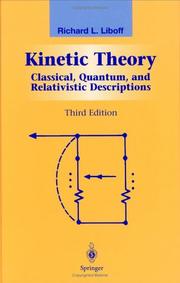
ISBN: 0387955518 9786610189830 1280189835 0387217754 Year: 2003 Publisher: New York, NY : Springer New York : Imprint: Springer,
Abstract | Keywords | Export | Availability | Bookmark
 Loading...
Loading...Choose an application
- Reference Manager
- EndNote
- RefWorks (Direct export to RefWorks)
Kinetic Theory: Classical, Quantum, and Relativistic Descriptions goes beyond the scope of other works in the field with its thorough treatment of applications in a wide variety of disciplines. Its clear exposition and emphasis on concrete examples will make it not only an excellent graduate text but also a valuable resource for researchers in such disciplines as aerospace, mechanical, and chemical engineering; astrophysics, solid state and laser physics and devices, plasma physics, and controlled and thermonuclear fusion. Among the topics covered are: - The Liouville equation and analyses of the Liouville equation, including two independent derivations - The Boltzmann equation and Boltzmann's H-theorem - Analysis of the linearized collision operator - Fluid dynamics and irreversibility - Assorted kinetic equations with applications to plasmas and neutral fluids - Elements of quantum kinetic theory, including the Green's-function formalism and the Wigner-Moyal equation - Relativistic kinetic theory and Lorentz invariants - Kinetic properties of metals and amorphous media - Monte-Carlo analysis in kinetic theory - Kinetic study of shock waves This third revised edition features a new section on constants of motion and symmetry and a new appendix on the Lorentz-Legendre expansion.
Kinetic theory of matter --- Matter, Kinetic theory of --- Matter --- Molecular theory --- Statistical mechanics --- Chemistry, Physical organic. --- Statistical physics. --- Complex Systems. --- Fluid- and Aerodynamics. --- Physical Chemistry. --- Statistical Physics and Dynamical Systems. --- Kinetic theory of matter. --- Dynamical systems. --- Fluids. --- Physical chemistry. --- Chemistry, Theoretical --- Physical chemistry --- Theoretical chemistry --- Chemistry --- Hydraulics --- Mechanics --- Physics --- Hydrostatics --- Permeability --- Dynamical systems --- Kinetics --- Mathematics --- Mechanics, Analytic --- Force and energy --- Statics --- Mathematical statistics --- Statistical methods --- Dynamics. --- Chemistry, Physical and theoretical.
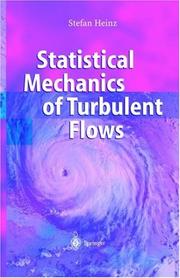
ISBN: 3540401032 3642072615 3662100223 Year: 2003 Publisher: Berlin ; New York : Springer,
Abstract | Keywords | Export | Availability | Bookmark
 Loading...
Loading...Choose an application
- Reference Manager
- EndNote
- RefWorks (Direct export to RefWorks)
The simulation of turbulent reacting flows, connected with environmental protection and the design of chemical and mechanical processes, is increasingly important. Statistical Mechanics of Turbulent Flows presents a modern overview of basic ways to calculate such flows. It discusses the fundamental problems related to the use of basic equations and their modifications. Special emphasis is placed on the discussion of very promising statistical methods which provide solutions to these problems by models for the underlying stochastic physics of turbulent reacting flows. Their foundations and important new developments up through current challenges are systematically explained. Students and researchers in atmospheric sciences and oceanography, mechanical and chemical engineering and applied mathematics and physics may use Statistical Mechanics of Turbulent Flows as a guide to solve many problems related, e.g. to the assessment of complex atmospheric chemistry, chemical reactor processes, turbulent combustion, and multi-phase flows.
Turbulence --- Statistical mechanics --- Mécanique statistique --- Statistical mechanics. --- Turbulence. --- Mécanique statistique --- Geophysics. --- Statistical physics. --- Dynamical systems. --- Fluids. --- Thermodynamics. --- Environmental monitoring. --- Geophysics and Environmental Physics. --- Complex Systems. --- Fluid- and Aerodynamics. --- Monitoring/Environmental Analysis. --- Geophysics/Geodesy. --- Biomonitoring (Ecology) --- Ecological monitoring --- Environmental quality --- Monitoring, Environmental --- Applied ecology --- Environmental engineering --- Pollution --- Chemistry, Physical and theoretical --- Dynamics --- Mechanics --- Physics --- Heat --- Heat-engines --- Quantum theory --- Hydraulics --- Hydrostatics --- Permeability --- Dynamical systems --- Kinetics --- Mathematics --- Mechanics, Analytic --- Force and energy --- Statics --- Mathematical statistics --- Geological physics --- Terrestrial physics --- Earth sciences --- Measurement --- Monitoring --- Statistical methods
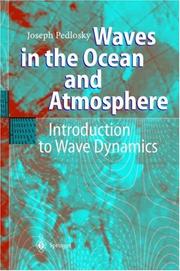
ISBN: 3540003401 9783540003403 3642055648 3662051311 Year: 2003 Publisher: Berlin: Springer,
Abstract | Keywords | Export | Availability | Bookmark
 Loading...
Loading...Choose an application
- Reference Manager
- EndNote
- RefWorks (Direct export to RefWorks)
For over twenty years, the Joint Program in Physical Oceanography of MIT and the Woods Hole Oceanographic Institution has based its education program on a series of core courses in Geophysical Fluid Dynamics and Physical Oceanography. One of the central courses in the Core is one on wave theory, tailored to meet the needs of both physical oceanography and meteorology students. I have had the pleasure of teaching of years, and I have particularly enjoyed the response of the the course for a number students to their exposure to the fascination of wave phenomena and theory. This book is a reworking of course notes that I have prepared for the students, and I was encouraged by their enthusiastic response to the notes to reach a larger audience with this material. The emphasis, both in the course and in this text, is twofold: the de velopment of the basic ideas of wave theory and the description of specific types of waves of special interest to oceanographers and meteorologists. Throughout the course, each wave type is introduced both for its own intrinsic interest and importance and as a ve hicle for illustrating some general concept in the theory of waves. Topics covered range from small-scale surface gravity waves to large-scale planetary vorticity waves.
Ocean waves. --- Atmospheric waves. --- 551.466 --- 551.51 --- 532.59 --- Dynamic meteorology --- Waves --- Breakers --- Sea waves --- Surf --- Swell --- Oceanography --- Water waves --- Sea waves and tides --- Structure, mechanics, thermodynamics of the atmosphere in general. Dynamic meteorology --- Wave motion --- 532.59 Wave motion --- 551.51 Structure, mechanics, thermodynamics of the atmosphere in general. Dynamic meteorology --- 551.466 Sea waves and tides --- Atmospheric waves --- Ocean waves --- Oceanography. --- Atmospheric sciences. --- Fluids. --- Atmospheric Sciences. --- Fluid- and Aerodynamics. --- Hydraulics --- Mechanics --- Physics --- Hydrostatics --- Permeability --- Atmospheric sciences --- Earth sciences --- Atmosphere --- Oceanography, Physical --- Oceanology --- Physical oceanography --- Thalassography --- Marine sciences --- Ocean
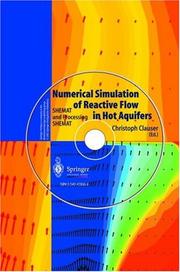
ISBN: 3540438688 9783540438687 3642628664 3642556841 Year: 2003 Publisher: Berlin: Springer,
Abstract | Keywords | Export | Availability | Bookmark
 Loading...
Loading...Choose an application
- Reference Manager
- EndNote
- RefWorks (Direct export to RefWorks)
This product, consisting of a CD-ROM and a book, deals with the numerical simulation of reactive transport in porous media using the simulation package SHEMAT/Processing SHEMAT. SHEMAT (Simulator for HEat and MAss Transport) is an easy-to-use, general-purpose reactive transport simulation code for a wide variety of thermal and hydrogeological problems in two or three dimensions. The book is a richly documented manual for users of this software which discusses in detail the coded physical and chemical equations. Thus, it provides the in-depth background required by those who want to apply the code for solving advanced technical and scientific problems. The enclosed companion CD-ROM contains the software and data for all of the case studies. The software includes user-friendly pre- and post-processors which make it very easy to set up a model, run it and view the results, all from one platform. Therefore, the software is also very suitable for academic or technical "hands-on" courses for simulating flow, transport of heat and mass, and chemical reactions in porous media. You can find a link to the updated software on springer.com .
Heat --- Mass transfer --- Groundwater flow --- Geophysics --- Transmission --- Computer simulation --- Mathematical models --- Fluid models --- Physics --- Physical Sciences & Mathematics --- Cosmic Physics --- Thermodynamics --- Computer simulation. --- Mathematical models. --- Geophysics. --- Geology. --- Geotechnical engineering. --- Fluids. --- Geophysics/Geodesy. --- Geotechnical Engineering & Applied Earth Sciences. --- Fluid- and Aerodynamics. --- Hydraulics --- Mechanics --- Hydrostatics --- Permeability --- Engineering, Geotechnical --- Geotechnics --- Geotechnology --- Engineering geology --- Geognosy --- Geoscience --- Earth sciences --- Natural history --- Geological physics --- Terrestrial physics --- Heat - Transmission - Computer simulation --- Heat - Transmission - Mathematical models --- Mass transfer - Computer simulation --- Mass transfer - Mathematical models --- Groundwater flow - Computer simulation --- Groundwater flow - Mathematical models --- Geophysics - Fluid models - Computer simulation --- Geophysics - Fluid models - Mathematical models --- Transfert de chaleur. --- Transfert de masse. --- Eaux souterraines --- Géophysique. --- Computer programs. --- Écoulement. --- Fluid models.
Multi
ISSN: 17825660 ISBN: 9789085720164 Year: 2003 Publisher: Mechelen Den Haag Kluwer Ten Hagen & Stam
Abstract | Keywords | Export | Availability | Bookmark
 Loading...
Loading...Choose an application
- Reference Manager
- EndNote
- RefWorks (Direct export to RefWorks)
Op deze website vindt u meer dan 6.000 tabellen, formules, grafieken, fact sheets en doorrekenbare formules die nuttig zijn bij het dagelijks werk van elektrotechnische en werktuigbouwkundige engineers. Daarnaast bevat de website een groot aantal specialistische engineering dossiers. Uiterst gebruikersvriendelijk en de grote verzameling gegevens is razendsnel doorzoekbaar. Engineering-data.com is bestemd voor: ontwerpers, constructeurs, engineers werkzaam in de machinebouw, elektrotechniek, installatietechniek, industriële bedrijven, ingenieursbureaus, importeurs en leveranciers.
CD-ROM --- Applied physical engineering --- sensoren --- elektrische aandrijvingen --- olievervuiling --- mechanische overbrengingen --- hydraulics --- pompen --- stoom --- hydraulica --- hydraulische systemen --- Hydraulic energy --- ingenieurswetenschappen --- aandrijvingen --- corrosie --- procestechnologie --- Aandrijftechniek --- Besturingstechniek --- Elektriciteit --- Elektrotechniek --- Energie --- Explosiebeveiliging --- Fysica --- Industriële netwerken --- Materialenkennis --- Mechanica --- Ontwerpmethodologie --- Procestechnieken --- Stoomtechniek --- Technologie --- Telecommunicatie --- Verbindingstechnieken --- Werktuigbouwkunde --- Wiskunde in de ingenieurswetenschappen en technologie --- Electrical eng --- electronics --- elektriciteit --- elektrotechniek --- energie --- exacte wetenschappen --- Exact Sciences --- fysica --- industriële wetenschappen & technologie --- materialenleer --- mechanica --- Mechanical engineering --- natuurkunde --- technologie --- veiligheid --- wiskunde --- 62-039 --- 62-039 Engineering materials in general --- Engineering materials in general --- E-journals --- Websites & databases --- Report --- Shipping --- toegepaste wetenschappen
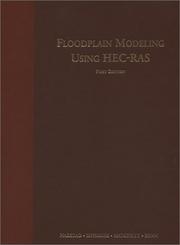
ISBN: 0971414106 9780971414105 Year: 2003 Publisher: Waterbury: Haestad press,
Abstract | Keywords | Export | Availability | Bookmark
 Loading...
Loading...Choose an application
- Reference Manager
- EndNote
- RefWorks (Direct export to RefWorks)
Floodplain management --- Floodplains --- Mathematical models --- Hydrologic Engineering Center (U.S.) --- Plaine d'inondation --- Système hydraulique --- Hydraulic systems --- Gestion des eaux --- water management --- Système d'information géographique --- Geographical information systems --- Modèle --- Models --- Application des ordinateurs --- computer applications --- 556.166 --- 626 --- 627.152 --- Hydrological forecasting --- -Floodplains --- Hydraulic engineering --- Engineering, Hydraulic --- Engineering --- Fluid mechanics --- Hydraulics --- Shore protection --- Flood plains --- River flood plains --- River floodplains --- Valleys --- Hydrology --- Earth sciences --- Maximum runoff. Floods. Flood runoff --- Hydraulic engineering in general --- Rivers and streams --- Forecasting --- 627.152 Rivers and streams --- 626 Hydraulic engineering in general --- 556.166 Maximum runoff. Floods. Flood runoff --- Flood plain management --- Management of flood plains --- Management of floodplains --- Watershed management --- Hydrologic Engineering Center. --- United States. --- Davis, Calif. --- H.E.C. (Hydrologic Engineering Center (U.S.)) --- Hec (Hydrologic Engineering Center (U.S.)) --- Floodplains - Mathematical models

ISBN: 3540213260 364205966X 9786610304882 128030488X 3540266933 Year: 2003 Publisher: Berlin : Springer,
Abstract | Keywords | Export | Availability | Bookmark
 Loading...
Loading...Choose an application
- Reference Manager
- EndNote
- RefWorks (Direct export to RefWorks)
Describing interstellar matter in our galaxy in all of its various forms, this book also considers the physical and chemical processes that are occurring within this matter. The first seven chapters present the various components making up the interstellar matter and detail the ways that we are able to study them. The following seven chapters are devoted to the physical, chemical and dynamical processes that control the behaviour of interstellar matter. These include the instabilities and cloud collapse processes that lead to the formation of stars. The last chapter summarizes the transformations that can occur between the different phases of the interstellar medium. Emphasizing methods over results, "The Interstellar Medium" is written for graduate students, for young astronomers, and also for any researchers who have developed an interest in the interstellar medium.
Matière interstellaire --- Interstellar medium --- Physics. --- Fluids. --- Astronomy. --- Astrophysics. --- Cosmology. --- Space sciences. --- Atomic structure. --- Molecular structure. --- Spectra. --- Atoms. --- Matter. --- Astronomy, Astrophysics and Cosmology. --- Extraterrestrial Physics, Space Sciences. --- Fluid- and Aerodynamics. --- Atomic/Molecular Structure and Spectra. --- Atoms and Molecules in Strong Fields, Laser Matter Interaction. --- Interstellar matter. --- Astronomical physics --- Astronomy --- Cosmic physics --- Physics --- Astrophysics --- Matter --- Space environment --- Interstellar reddening --- EPUB-LIV-FT LIVPHYSI SPRINGER-B --- Space Sciences (including Extraterrestrial Physics, Space Exploration and Astronautics). --- Atomic structure . --- Molecular structure . --- Natural philosophy --- Philosophy, Natural --- Physical sciences --- Dynamics --- Chemistry, Physical and theoretical --- Stereochemistry --- Structure, Molecular --- Chemical structure --- Structural bioinformatics --- Hydraulics --- Mechanics --- Hydrostatics --- Permeability --- Deism --- Metaphysics --- Science and space --- Space research --- Cosmology --- Science --- Structure, Atomic --- Atomic theory --- Constitution --- Interstellar matter
| Listing 1 - 10 of 10 |
Sort by
|

 Search
Search Feedback
Feedback About UniCat
About UniCat  Help
Help News
News